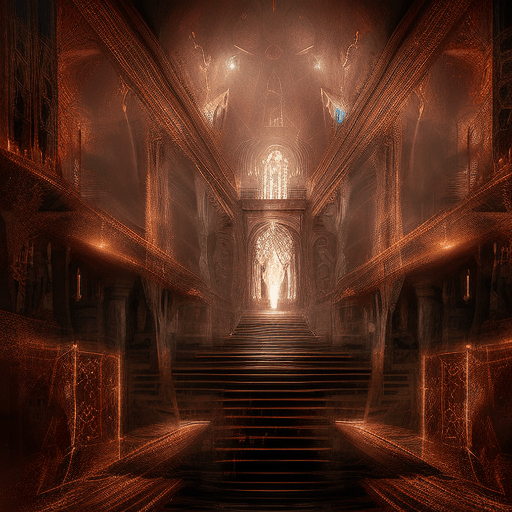The Da Vinci Code: A Thrilling Quest for a Hidden Secret
In Dan Brown’s best-selling novel, “The Da Vinci Code,” symbologist Robert Langdon finds himself entangled in a thrilling quest to uncover a hidden secret that could shake the foundations of Christianity. With the help of cryptologist Sophie Neveu, Langdon must decipher a series of clues left behind by a murdered curator, all while evading a relentless pursuit by a secret society determined to protect the secret at all costs.
A Murder and a Cryptic Message
The story begins with the murder of Jacques Saunière, the curator of the Louvre Museum in Paris. Before his death, Saunière manages to leave behind a cryptic message, written in his own blood, which leads Langdon and Neveu on a dangerous journey to uncover the truth. As they follow the clues, they discover a hidden code within the works of Leonardo da Vinci, hinting at a secret that has been guarded for centuries.
An Ancient Secret and a Sinister Conspiracy
As Langdon and Neveu delve deeper into their investigation, they uncover a secret society known as the Priory of Sion, which has been protecting the truth about the Holy Grail for centuries. The Holy Grail, they discover, is not a physical chalice, but rather the bloodline of Jesus Christ. This revelation challenges the traditional beliefs of Christianity and threatens to undermine the power of the Catholic Church.
However, the Priory is not the only group interested in the secret. A clandestine organization known as Opus Dei, with strong ties to the Vatican, is also determined to keep the truth hidden. Led by the fanatical Bishop Aringarosa, Opus Dei will stop at nothing to prevent Langdon and Neveu from uncovering the secret and exposing it to the world.
A Race Against Time
As Langdon and Neveu race against time to unravel the clues and uncover the truth, they find themselves pursued by both the French police and Opus Dei. With each step they take, the danger intensifies, and the line between friend and foe becomes increasingly blurred. Along the way, they encounter a cast of intriguing characters, including the enigmatic Sir Leigh Teabing, a British historian with his own agenda.
In their quest, Langdon and Neveu explore famous landmarks such as the Louvre, Westminster Abbey, and Rosslyn Chapel, uncovering hidden symbols and uncovering the truth behind centuries-old mysteries. Their journey takes them from Paris to London and finally to Scotland, where they come face to face with the ultimate secret.
Key Takeaways:
- The power of symbols and hidden codes to convey hidden truths.
- The exploration of controversial theories surrounding the life of Jesus Christ and the Holy Grail.
- The clash between religion and science, tradition and progress.
- The importance of questioning established beliefs and seeking the truth.
- The blurred line between good and evil, and the complexity of human nature.
“Men go to far greater lengths to avoid what they fear than to obtain what they desire.” – Dan Brown, The Da Vinci Code
In conclusion, “The Da Vinci Code” is a gripping and thought-provoking thriller that combines art, history, and religion into a captivating narrative. Dan Brown’s masterful storytelling keeps readers on the edge of their seats as they follow Langdon and Neveu’s quest for the truth. The book challenges traditional beliefs and raises important questions about the nature of faith, the power of secrets, and the lengths people will go to protect them.












